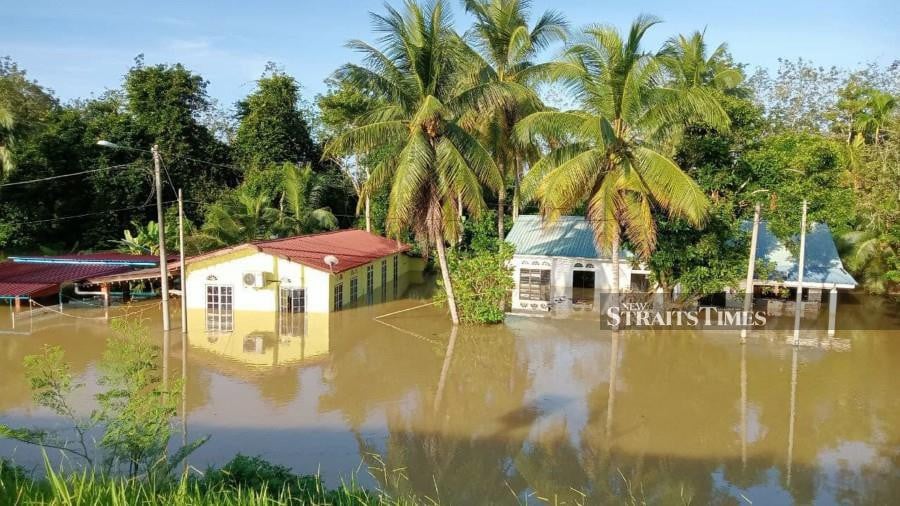Articles / Newsletter

Belated greetings for 2022. May the New Year bring us better life ahead despite the ongoing Covid-19 pandemic.
We had gone through the Movement Control Order (MCO) on March 18, 2020, experiencing total lockdown, and, we have survived.
But, just as we are beginning to breathe a sigh of relief when the stagnant economic sector gradually recovers after so long when suddenly, on Dec 18 and 19, last year, we were hit by devastating floods in several states.
In Selangor, the hard-hit places were Klang, Shah Alam, Sepang, and Hulu Langat. Photos and videos of the floods that went viral on the social media were heart wrenching.
Some were stuck on the roofs of houses in the cold and night for several days. Others were stranded on the Federal Highway and had to sleep in their cars. A video with the cries of a baby who might be hungry for milk, teared up many.
It has been reported that more than 50,000 cars were submerged in the floods. Over the past weeks, the issue that has been on many a mind is car loan instalments, which have thankfully been resolved by banks.
Indeed, those with only one vehicle to commute to work are certainly facing a big problem. Similarly, houses that were flooded with mud and silt.
Some homes were demolished, while others with furniture sunk and electrical appliances, documents, gadgets, and others destroyed in the blink of an eye.
Damaged roads had to be closed or diverted, and this had caused unusual traffic congestion. The damaged roads, of course, take time to repair.
Garbage too posed a big problem to be dealt with in months to come. Sadly, many lives were lost in the floods. As a consequence, several points can be learnt namely:-
First, our flood management system. The Stormwater Management and Road Tunnel (SMART) has played a brilliant role as it had managed to divert five million cubic metres of water.
SMART was able to divert water from Sungai Klang and Sungai Ampang to the Taman Desa Reservoir to prevent significant floods in Kuala Lumpur. Indeed, CNN has ranked the Malaysia SMART Tunnel as one of the top 10 world's most excellent tunnels.
Secondly, the short- and long-term effects of the floods on financial constraints, mainly felt by those who do not have savings, depending on the salary they receive each month.
Thirdly, the tragedy has shown how Malaysians among the different races and religions rallied together to render help. Netizens use the hashtag #rakyatjagarakyat. The spirit of helping others is evident when disaster strikes.
For example, Kuan Chee Heng, also known as Uncle Potato, shared his feelings on the social media and together with the Fire and Rescue Department personnel rescued flood victims and sent them to the Putrajaya Hospital. Uncle Potato also bought drones, boats and set up an aid collection centre for flood victims.
Another viral news about how a 29-year-old man named Azwan Omar drove his Perodua Viva with a rubber boat atop from Melaka to Taman Sri Muda, the worst affected area in Selangor. Among those he rescued were an elderly couple, a paralysed husband, a mother with a newborn baby and two dogs.
Another hero is Rosmadi Arif, who saved about 70 flood victims, from Kampung Prom and Kampung Esok, in Chennai village, Negri Sembilan.
The Sikh community from Gurdwara Sahib Petaling Jaya provided free vegetarian food to flood victims around the Klang Valley. According to Twitter @SikhInside, volunteers had almost 150 kilogrammes of rice cooked. Indeed, Malaysians from different races and religions had worked together to give relief during the floods.
A professor in geology once said that when a flood occurs, firstly, look at the colour of the floodwater. If it is clear, it means the water is from rainwater and does not have an element of environmental damage.
Flooding occurs when the amount of rainwater that fall in large numbers could not be drained-out immediately, or input was higher than output.
However, if the colour of the floodwater is like milk tea, it can be associated with elements of natural destruction. The rainwater that falls will transport along soil or mud.
The roots of the tree hold the ground, and these roots will act as a sponge when it rains heavily, but when forests are cleared, trees uprooted, then the soil is no longer held by the tree roots; hence, when it rains heavily, the dirt and mud will flow everywhere including into houses, drains and rivers.
Hence, the question that plays in one's mind is, where did the soil come from this time and end up turning into mud?